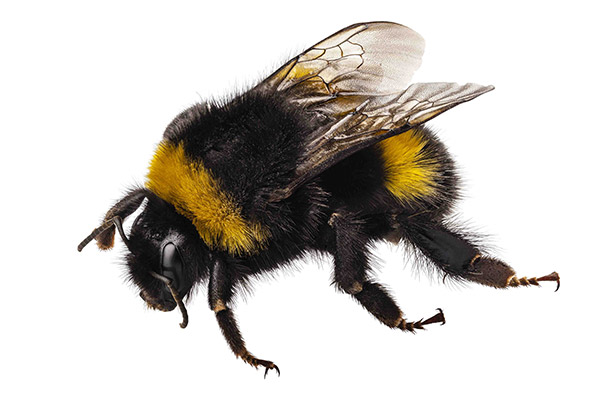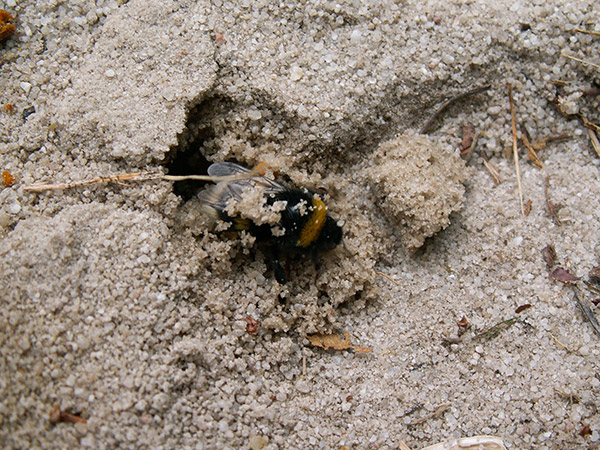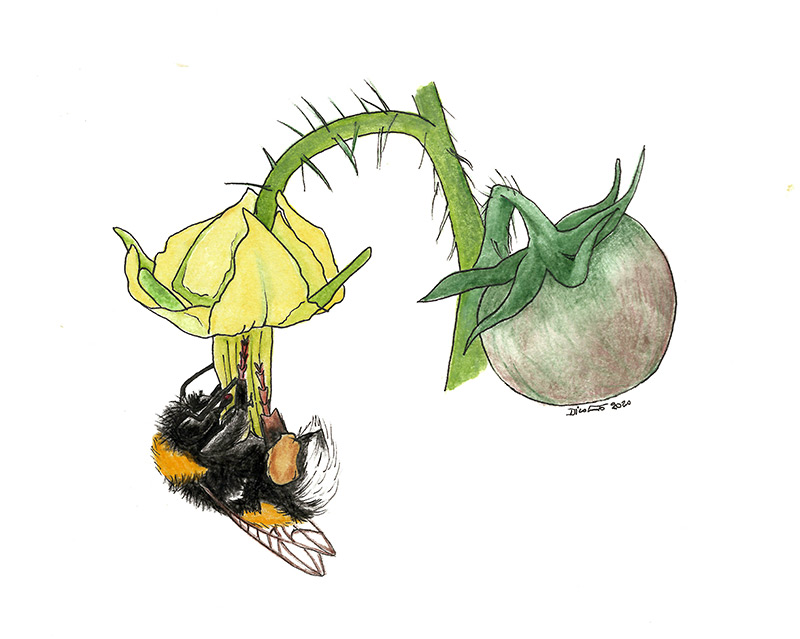binomial nomenclature
common name
Bombus terrestris
Bumblebee
There are about 300 species of bumblebees in the world. One of the most common in Europe is the Bombus terrestris. It’s larger than the bee and has a round body covered in soft hair (long branched setae) called pile.

The bumblebee is a social insect too, but unlikeApis mellifera, its society is made up of a few individuals. There is a queen, about 300 workers and a hundred males, who are born only at the end of the season. The queen leaves the dormancy at the beginning of the year and nidifies in underground holes. In a cell above a soft surface of moss, dried leaves and herbs, lays some eggs, from which the first workers of the colony will develop. The queen can live up to a year, the workers from a few weeks to two months maximum. The new queens are generated only at the end of summer, are then fertilized by the males and go into dormancy to face the winter.

The densely furry body, the ability to visit a large number of flowers, to transfer a huge amount of pollen from one flower to another (greater than other pollinating insects) and being operative from early morning until late evening (even in cloudy and windy conditions), make the bumblebee the pollinator par excellence. They are also peaceful in nature, that’s why are especially utilized in agriculture for the pollination of many fruit plants and vegetables.
